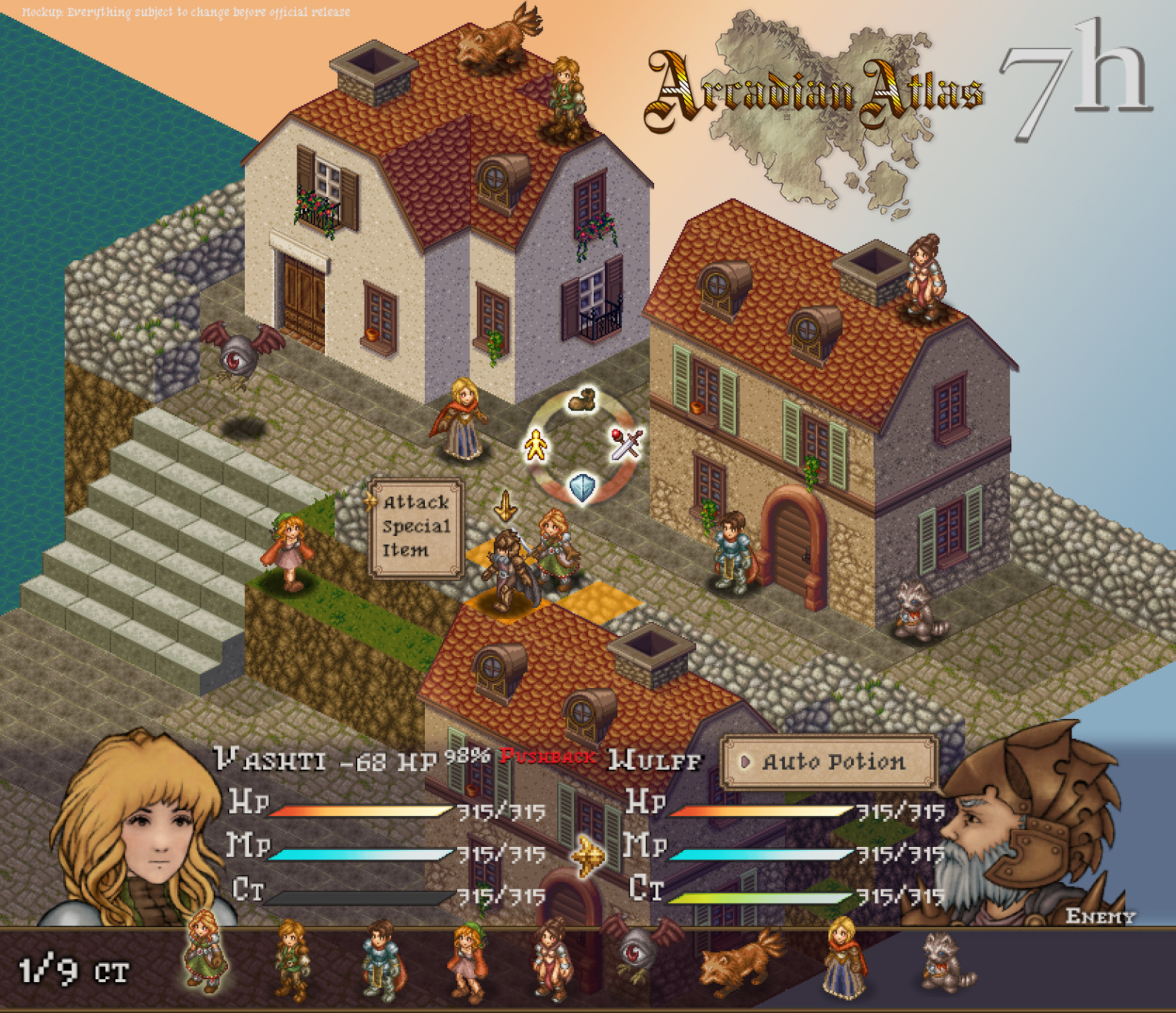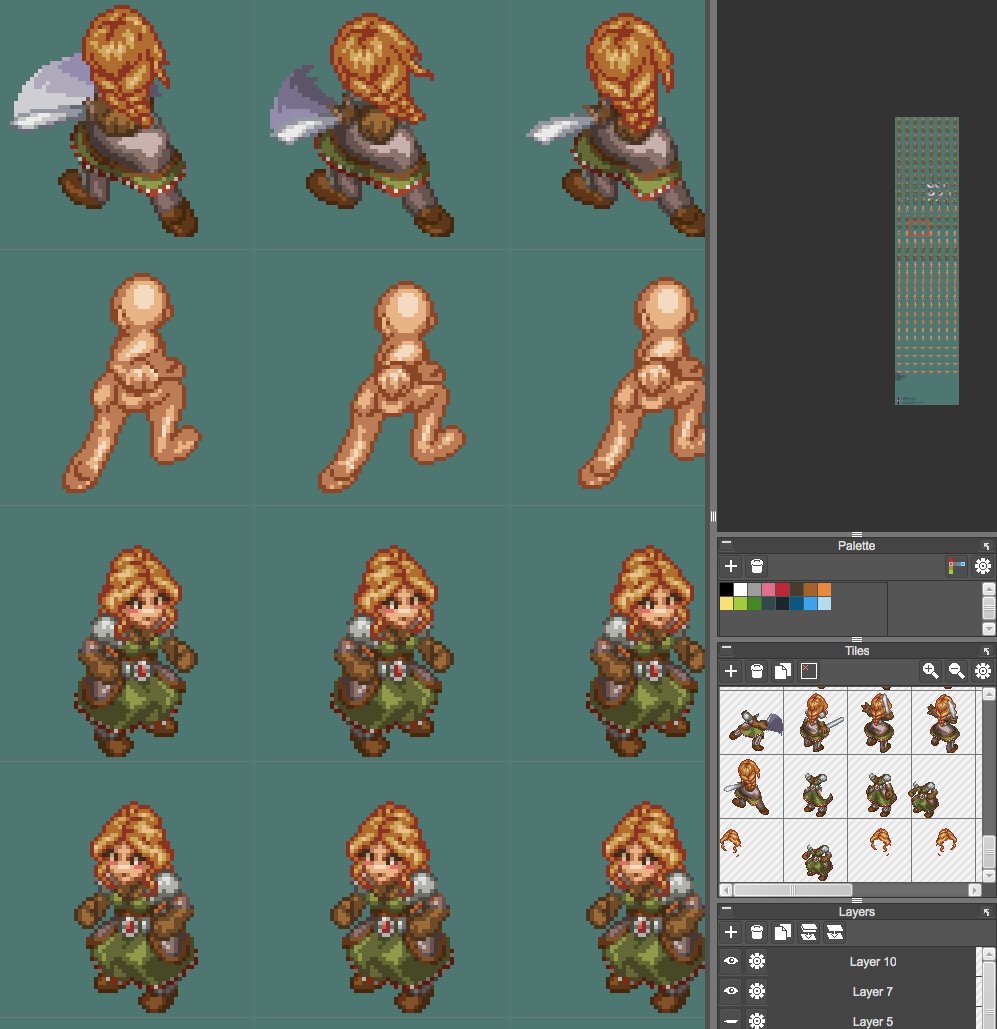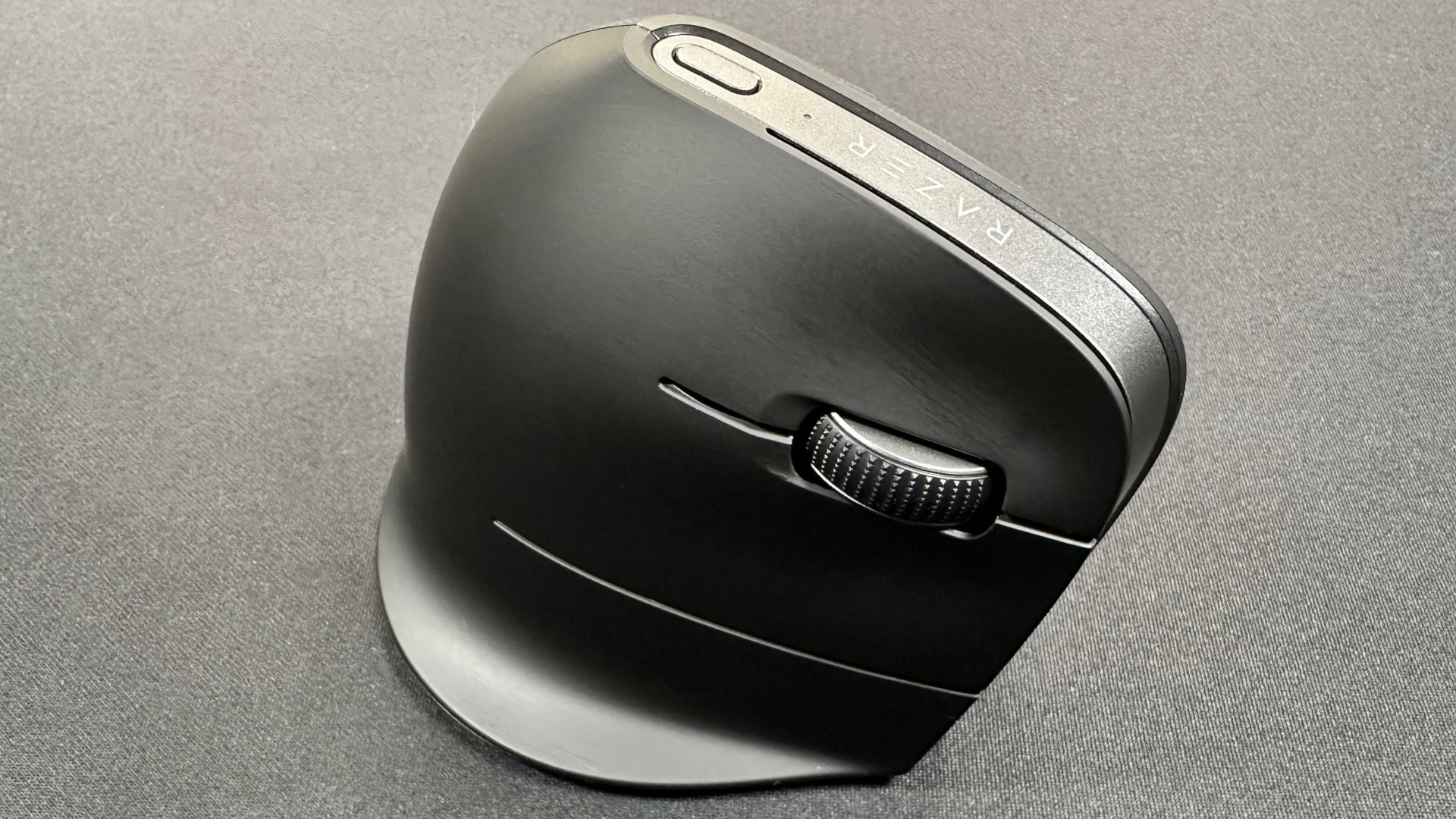How Arcadian Atlas plans to bring the strategy JRPG to PC
An indie Kickstarter project inspired by Final Fantasy Tactics shows how far RPG Maker has come as a real development tool.

Arcadian Atlas didn’t look like it had a chance. I found that surprising when I stumbled upon its Kickstarter a week before it hit the finish line—how could a seemingly tone-perfect homage to Final Fantasy Tactics be only halfway to its conservative $90,000 goal? As with any Kickstarter, there was no guarantee that Arcadian Atlas would be finished or that it would live up to its promise, but if there’s one genre I’d love to see more of on PC, it’s strategy RPGs. Arcadian Atlas looked dead in the water until, in the final two days, it sprang to life.
“You and I were probably both equally surprised that we funded at the end,” said Becca Bair, the pixel artist half of the brother-and-sister pair heading up Arcadian Atlas. “Since probably the first week I had already projected that we weren’t going to fund this time around, so I was already on in my mourning process.” At the last minute, backers upped their pledges and so did family members, and Arcadian Atlas was on the road to reality.
It still has a long way to go, with a release date planned for early 2018, but I think there’s a success story in the making with Arcadian Atlas. A generation of indie developers like the Bairs have turned to Kickstarter to build the kinds of games they grew up playing, and many of them learned the basics of game design through RPG Maker. A tool once solely used for fan games is now giving designers a chance to make real games, and in the process it’s grown up alongside them.
“RPG Maker MV is the base that Taylor and I work within,” Bair said. “Then our programmer does custom Javascripted engines on top of that, which help it to differentiate itself a little bit from maybe a more standard RPG Maker game. It’s all wrapped in a convenience wrapper for Taylor and I. Taylor’s a little more savvy for scripting and programming. Me, on the other hand, I am an artist, so I like to be able to just plug stuff in visually, see what I’m doing. So it’s really an aid for me. It helps me to see that I’m adding text boxes and items to the shop that I’ve set up without having to go bug our programmer about it.”
If you ever aspired to make your own Final Fantasy fan-fiction, you probably remember the clunkiness of the older RPG Maker software. I toyed with RPG Maker 2000 a decade ago, building a rudimentary RPG with its obtuse, menu-heavy UI that danced around the need for programming. Later versions of the software added the ability to program in Ruby, supported higher resolutions, and put together more complex layered maps. Commercial games made with these tools are rare, but they do exist. Before Ruby programming was added, developer Austin Jorgensen used RPG Maker to developer LISA. Kan Gao created the moving story of To the Moon in RPG Maker XP.

With RPG Maker MV, released in late 2015, it seems like RPG Maker may finally have come into its own as a tool for commercial game development—perhaps not as powerful and flexible as Game Maker, but with the addition of Javascript support, it’s suddenly able to support projects like Arcadian Atlas.
“I would say the current version is leaps and bounds ahead, and much cooler, than the old versions,” Bair said. “The old versions were fun in that you could make a classic RPG-style game, but they weren’t open-ended enough to where you could necessarily change the core mechanics of the game. Now with MV you can do Javascripting, so you can pretty much customize the game to whatever you want it to be, which is what allows us to do the tactical battle engine and the isometric X, Y and Z plane mapping that we have.”
Keep up to date with the most important stories and the best deals, as picked by the PC Gamer team.

A work-in-progress sprite sheet tweeted by Becca Bair.
Bair draws and paints in Photoshop and does sprite animation in Pyxel, a young, still-in-development tool built for pixel art. “It can export directly into a sprite sheet or as an animated gif,” Bair said. For the sprite sheet it will just do a frame-by-frame breakdown and you can import that directly into RPG Maker. I like that program specifically for spriting. Their animation features really lend themselves to that, and the layers that they offer. Photoshop is better for color and contrast tweaking and the finishing touches for sprite work.”
Arcadian Atlas’s programmer has already built an engine for creating the isometric battle maps they’ll use in the game, which Bair pointed to as a possible avenue for future mod support. It’s already user-friendly enough to allow for designing maps without the need for complex programming.
Even well-received RPG Maker games like To the Moon and Skyborn ultimately look very much like the top-down 2D Super Nintendo games that inspired them. Arcadian Atlas may draw just as heavily from isometric games like Tactics Ogre, but if it’s a success, it’ll show how far RPG Maker has come as a game development tool. And if the Bairs’ plan for the class system—a combination of FFT’s jobs and branching skill trees of their own design that force you to specialize—is as addictive as their strategy RPG inspirations, I expect to be playing a hell of a lot of it.

Wes has been covering games and hardware for more than 10 years, first at tech sites like The Wirecutter and Tested before joining the PC Gamer team in 2014. Wes plays a little bit of everything, but he'll always jump at the chance to cover emulation and Japanese games.
When he's not obsessively optimizing and re-optimizing a tangle of conveyor belts in Satisfactory (it's really becoming a problem), he's probably playing a 20-year-old Final Fantasy or some opaque ASCII roguelike. With a focus on writing and editing features, he seeks out personal stories and in-depth histories from the corners of PC gaming and its niche communities. 50% pizza by volume (deep dish, to be specific).

